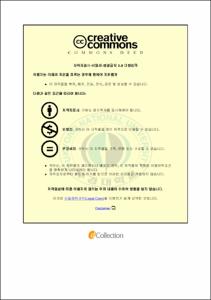선행강우를 고려한 불포화 사면의 안정해석 및 한계선 연구
- Abstract
- Many slope failures have been taken place in Korea during rainy season. Rainfall as one of the most significant factor related to the landslides which cause a considerable damage to society. The rainfall-induced landslides in Korea are generally shallow and are triggered by decrease in matric suction of slope materials during rainfall. Unsaturated geotechnical properties and other factors(rainfall characteristic, geomorphology, etc) have to be considered in order to evaluate the stability of real slope. Even though antecedent rainfall is also an important factor on the slope stability, Therefore, in this study, the case of slope failure is a major cause of rainfall Pattern were analyzed and Effect of antecedent rainfall was considered in analysis by using initial matric suction, Effects of antecedent rainfall on variation of factor of safety(FS) of slope, failure time and cumulative rainfall were evaluated.
To determine the relationship between rainfall and landslides, we proposed landslide-triggering rainfall threshold consisted of rainfall intensity-duration(I-D). For this study, the landslide database was prepared using data from NDMI(National Disaster Management Institute), various report and newspaper. And most of the required rainfall data were collected from KMA(Korea Meteorological Administration). Some 114 landslides occuring from 1999 to 2011 were studied to analyze rainfall threshold from granite soil. The threshold relationship fitted to the minimum level of the field defined by landslide-triggering rainfall event is I=19.38D-0.45(I=rainfall intensity in mm/hr and D=duration in hours). Also, the rol of antecedent rainfall in causing landlsides was proposed by considering initia matric suction.
The Reliable Slope stability analysis and landslide-triggering rainfall thresholds maybe most appopriately used in landslide early warning systems in Korea.
- Issued Date
- 2013
- Awarded Date
- 2013. 2
- Type
- Dissertation
- Publisher
- 부경대학교
- Affiliation
- 부경대학교 대학원
- Department
- 대학원 해양공학과
- Advisor
- 김윤태
- Table Of Contents
- 1. 서론 1
1.1 연구배경 및 목적 1
1.1.1 연구배경 1
1.1.2 연구목적 3
1.2 연구내용 및 구성 6
2. 이론적 배경 8
2.1 불포화 풍화토의 이론적 배경 8
2.1.1 기본구조 8
2.1.2 모관흡수력 9
2.2 함수특성곡선 11
2.2.1 함수특성곡선 특성 11
2.2.2 함수특성곡선 실험장비 13
2.2.3 함수특성곡선 방정식 14
2.3 불포화 투수곡선 17
2.3.1 불포화 투수특성 17
2.3.2 불포화 투수계수 추정 기법 20
2.4 불포화 전단강도 23
2.5 강우 한계선의 이론적 배경 29
2.5.1 강우량을 이용한 사면 붕괴 예측 29
2.5.2 산사태와 강우와의 관계 연구 32
3. 선행강우를 고려한 침투 및 안정해석 40
3.1 강우패턴에 따른 사면의 안정성 특성 40
3.1.1 해석조건 40
3.1.2 강우패턴에 따른 안전율 변화 45
3.1.3 강우패턴에 따른 침투특성 48
3.1.4 선행강우 후 유발강우에 의한 안전율 변화 51
3.2 초기 모관흡수력에 따른 사면의 안정성 특성 53
3.2.1 해석조건 53
3.2.2 건조 및 습윤 함수특성곡선의 영향 57
3.2.3 사면 경사의 영향 59
3.2.4 ks/i 비의 영향 60
3.2.5 투수계수(ks)의 영향 63
4. 강우 한계선 설정 연구 66
4.1 국내 화강풍화토 지반의 재해이력사례 분석 66
4.2 재해이력사례를 이용한 경험적 강우 한계선 설정 68
4.3 2011년 재해이력사례를 통한 한계선 검증 70
4.4 기존 강우 한계선과의 비교 분석 71
4.5 선행강우를 고려한 강우 한계선 74
5. 결론 및 향후 연구방향 75
참고문헌 79
- Degree
- Master
- Files in This Item:
-
-
Download
 선행강우를 고려한 불포화 사면의 안정해석 및 한계선 연구.pdf
기타 데이터 / 3.92 MB / Adobe PDF
선행강우를 고려한 불포화 사면의 안정해석 및 한계선 연구.pdf
기타 데이터 / 3.92 MB / Adobe PDF
-
Items in Repository are protected by copyright, with all rights reserved, unless otherwise indicated.